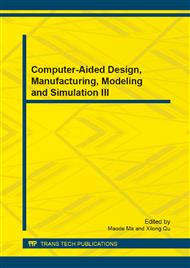p.160
p.164
p.169
p.174
p.180
p.184
p.189
p.194
p.201
Research on Badminton Flight Tracks Based on Aerodynamics
Abstract:
Badminton is one of the popular sports in the world. Our country is located on the top of the world badminton list. In order to improve the player skills, we have made the following research. We have analyzed the design and the flight track of the badmintons in accordance with the aerodynamics and then establish a model. According to the hydromechanics, the stress the badminton takes when flying is analyzed, then the relation between resistance and the speed can be got. After the curve fitting, the curve fitting figure is shown to us. Finally, we simulate the badminton flight track by using Runge-Kutta method and then get the track figure.
Info:
Periodical:
Pages:
180-183
Citation:
Online since:
October 2013
Authors:
Keywords:
Price:
Сopyright:
© 2014 Trans Tech Publications Ltd. All Rights Reserved
Share:
Citation:


